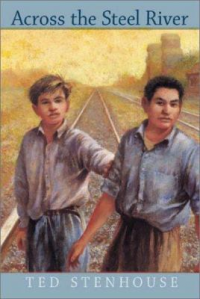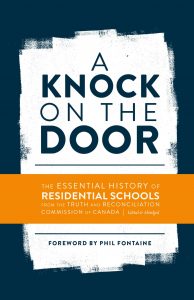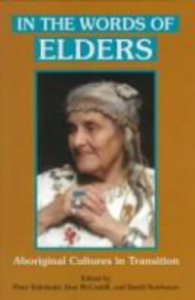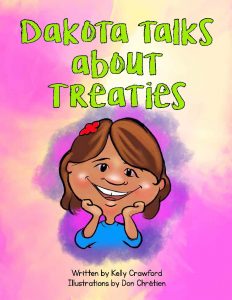 For the month of February, the ground floor display is featuring materials on the subject of Indigenous histories. Indigenous histories in Canada are rich and diverse. To focus on the histories, heritage, and cultures of First Nation, Inuit and Métis communities across Canada we have collected material to reflect topics such as Elders knowledge, treaty-making, residential schools, and resistance against the Settler State and settler colonialism.
For the month of February, the ground floor display is featuring materials on the subject of Indigenous histories. Indigenous histories in Canada are rich and diverse. To focus on the histories, heritage, and cultures of First Nation, Inuit and Métis communities across Canada we have collected material to reflect topics such as Elders knowledge, treaty-making, residential schools, and resistance against the Settler State and settler colonialism.
Across the Steel River by Ted Stenhouse 
Set in the year of 1952, Stenhouse tells the story of a friendship between teenage boys Will and Arthur. The two have been friends forever but the town believes they’ll outgrow their friendship due to their family’s history. They prove the town wrong as their friendship strengthens in discovering a badly beaten man by the train tracks. It’s revealed that the beaten man left for dead was not just any ordinary man, but a decorated Indigenous war-hero from the Second World War. Although the local police turn a blind eye on what caused Yellowfly’s injuries, the boys take it upon themselves to break the case. Recommended reading Ages: 10-14; Grades 5-9.
The North-West Resistance of 1885 produced by the Curriculum Unit at the Gabriel Dumont Institute of Native Studies and Applied Research; revision by Joanne Pelletier
This book sheds light on the aftermath of the Red River Insurgence. Rather than being treated as equal partners in Confederation, the Métis of the Red River were treated as conquered people. This item recounts the significance of the Insurgency of 1885 and the formation of the Métis Nation. New leaders and the people are once again speaking out demanding their inherent rights as an Indigenous nation.
 A Knock on the Door: The Essential History or Residential Schools from the Truth and Reconciliation Commission of Canada with a foreword by Phil Fontaine
A Knock on the Door: The Essential History or Residential Schools from the Truth and Reconciliation Commission of Canada with a foreword by Phil Fontaine
“It can start with a knock on the door one morning. It is the local Indian agent, or the parish priest, or, perhaps, a Mounted Police officer… The officials have arrived and the children must go.” (Fontain, 2016). This book captures the history of Residential Schools and the traumatic experiences of many Indigenous children in Canada. Published in collaboration with the National Centre for Truth and Reconciliation, this book presents the essential history and legacy of Residential Schools, informing readers of the journey of Reconciliation with Indigenous Peoples.
In the Words of Elders: Aboriginal Cultures in Transition 
edited by Peter Kulchyski, Don McCaskill, and David Newhouse
In the Words of Elders: Aboriginal Cultures in Transition is a collection of interviews with 16 Elders and Traditional Teachers. The book addresses a range of topics of first-person narratives by a generation of respected Elders and Traditional Teachers selected for interviews in the compilation of this book. Readers are able to experience different collected views and compare world-view and traditions based on stories told by members of the following communities: Passmoquady, Micmac, Seneca, Mohawk, Odawa, Ojibwe, Innu, Mushkegowuk Cree, Inuit, Dakota Sioux, Saulteau, Slavey, Dogrib, Shayshas, and Musqueam.
Dakota Talks About Treaties by Kelly Crawford 
Dakota Talks About Treaties is a story about Dakota. The reading begins with Dakota’s speech about her journey to learn about treaties. Dakota explains what treaties are and their importance. The book aims to capture children’s interest and connect them to learning about treaties and Indigenous histories. This helps children learn the importance and relevance of treaties in their own lives. The story is meant to be read aloud by the teacher at the elementary school level. As a teaching tool, the back of the book provides “Teacher Quick Tips” and a “Teacher Reference” for helpful information and suggestions.
